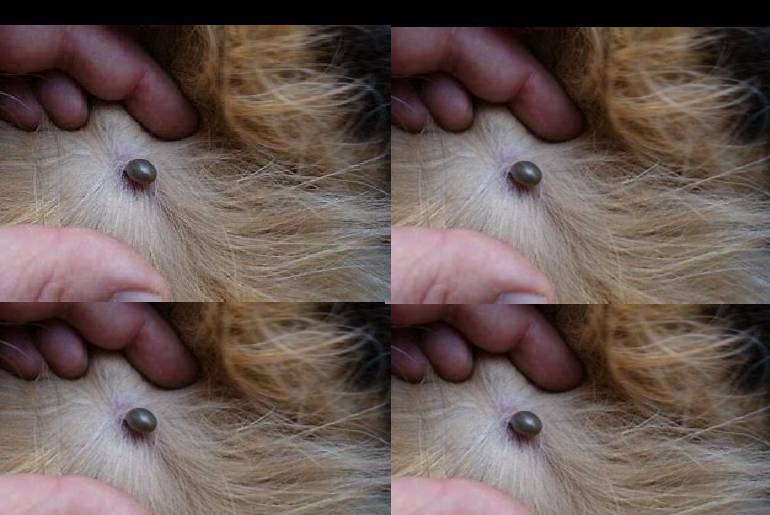Lyme disease is a bacterial infection that is spread by ticks. It can affect dogs and people, and it is important to be aware of both species’ symptoms and treatment options. This blog post will discuss Lyme disease, how it affects chihuahuas and people, and the steps you can take to prevent your pet from getting infected.
Lyme disease is a serious infection that can affect both dogs and people. It is caused by the Borrelia burgdorferi bacteria carried by ticks. If left untreated, Lyme disease can cause serious health problems in dogs and people.
The symptoms of Lyme disease can vary depending on the species. In dogs, the most common symptoms are fever, swollen joints, and loss of appetite. The most common symptoms in humans are rash, fatigue, and flu-like.
What Is Lymes Disease?
Ticks can carry a bacteria called Lymes disease, a type of infection affecting dogs and people. The disease can be treated with antibiotics if caught early, but if left untreated, it can cause serious health problems.
Furthermore, there is no definitive cure for Lyme disease, which requires a long course of antibiotics over several weeks.
The most common signs for dogs and people include fever, joint pain, lethargy (tiredness), and swollen lymph nodes. If you suspect your dog or yourself has contracted Lyme disease, it’s important to visit a doctor as soon as possible so they can assess the situation.
What Are The Symptoms Of Lymes Disease In Humans?
Ticks are small parasitic insects that feed off blood from warm-blooded animals, including humans! However, ticks do not just bite. They also transmit Lyme disease by attaching themselves to our skin through their saliva (invisible).
The symptoms of Lyme disease in humans can vary depending on how long you have had the infection and what stage it is at. Some common symptoms include fever, headache, fatigue, muscle aches, and joint pain. Unfortunately, many people do not experience any symptoms until the later stages of the infection.
What Are The Symptoms Of Lymes Disease In Dogs?
They can transmit diseases in less than 24 hours, so it’s important to check for ticks on your body after being outside where there might have been some around!
- Fever
- loss of appetite,
- weight loss,
- lameness (joint pain),
- swelling around joints and lymph nodes and
- behavioral changes such as depression or aggression.
- lethargy
You must take your dog to a vet if they are showing any signs, as this can lead to serious health problems such as kidney failure or heart conditions in humans.
Do All Ticks Carry The Disease?
Ticks carry Lyme disease, but not all ticks do. For example, the black-legged tick (also known as deer ticks) is most likely to infect humans with bacteria that cause Lyme Disease if they feed on us long enough!
There are many types of ticks, and each type can transmit a wide range of diseases. Some species will only bite animals, while others prefer attacking humans without preference between genders or age groups.
All ticks need blood to survive, so when you have one attached, it’s important not to squish them because this could release more bacteria into your body which might cause an infection like Lymes Disease! So, the next time you find yourself outside, check for these little buggers before heading back inside!
Why Should Dog Owners Lookout For Ticks?
Ticks carry bacteria called Borrelia burgdorferi which causes Lyme disease when transmitted into another animal through their saliva during feeding time – usually from rodent hosts like mice or deer!
Can Transmit Lyme Disease
Lyme disease is transmitted through ticks, but not all ticks carry bacteria that cause Lyme disease, so some types of tick bites will not lead to a serious infection.
It can Cause Serious Infections
These include the American dog tick and Lone Star Tick (Amblyomma americanum), Blacklegged Tick (Ixodes scapularis) in North America; as well as European Sheep Ticks (Haemaphysalis spp.) throughout Europe. They can also be found on pets such as cats or dogs, who bring them home from their adventures outdoors’.
No Vaccine
No vaccine is available against Lymes Disease, making it even harder for vets to treat if your pet has been infected with this nasty bug. Even if your pet has been vaccinated against rabies, there is no guarantee that it will protect them from Lymes Disease.
Ticks Can Carry Other Diseases
Lymes Disease is not the only disease ticks can carry and transmit to humans, dogs, or other animals. They are known carriers of Rocky Mountain spotted fever (RMSF), tularemia, and babesiosis, among many others.
Ticks can also turn into fleas carrying tapeworms. So if you see one on your pet, it’s time for a trip to the vet’s office!
Veterinarians will have access to medications such as Frontline Plus. It kills ticks and flea eggs before they become adults while protecting against heartworms in dogs too!
Make sure that any products used by veterinarians meet EPA standards. So there aren’t any unwanted side effects when using them on your pet.
What Should I Do If I Find A Tick On My Dog?
If you find a tick on your dog, removing the parasite quickly and properly is important.
Pick Them Out
The best way to do this is with tweezers, or a pair of pointed scissors held close together between two fingers like chopsticks. Carefully grasp near its head where the body meets at an angle (not straight). Pull firmly but not hard enough so that part of him breaks off there!
Do Not Apply Alcohol
Do not apply any substances like rubbing alcohol which will cause more harm than good because ticks need oxygen just as we do–and these liquids can suffocate them faster than anything else!
One exception might be if someone has an allergy reaction when bitten by one; using something like this may help alleviate symptoms until they get to a doctor.
Dispose of the Tick Appropriately
Once you have removed the tick, please place it in a container with rubbing alcohol or in a sealed baggie and then throw it away.
Put It In A Jar
If you’re squeamish about handling ticks, get someone else to do it for you! Place the jar upside down so it can’t crawl out and release any bacteria into your environment.
What Are The Treatment For Lyme Disease In Dogs?
There is a wide variety of treatments for Lyme disease in dogs, depending on how severe the infection is and what stage it is at. A vet will be able to prescribe antibiotics if there is any diagnosis. However, there are some cases where the dog’s kidneys or heart have been damaged due to the infection, which can be costly to treat.
Can I Prevent Tick Bites?
The best way to prevent tick bites (and subsequent infections) is to take some simple precautions when outside in areas where ticks might live:
- Wear light-colored clothing to see any ticks crawling on you before they attach themselves. Wear long sleeves or pants with an elastic band at the bottom if possible. So they won’t get inside your clothes!
- It is important to check for ticks on your body after being outside where there might have been some around!
- To further protect against tick bites when hiking or in areas where tick populations are present.
- You can use repellents like DEET insect repellent sprays that work well but need to reapply every four hours. Or purchase some Permethrin-impregnated clothing from any outdoor store such as REI. And spray it onto socks/pants before going into high-risk areas (this will last through about six washings).”
Conclusion
Ticks and Lyme disease can be very dangerous for both humans and dogs. Everyone must understand how to prevent tick bites and what ticks look like so they know when it’s time for a trip back inside!
We hope you found this information helpful in understanding the importance of protecting yourself from these nasty little bugs 🙂








